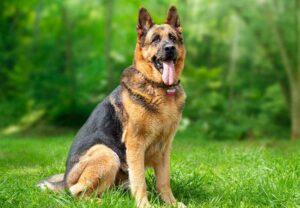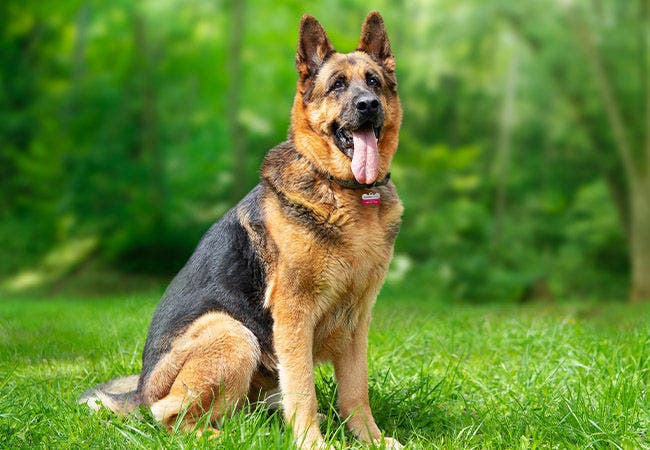Are you looking for the Best Dental Treats for Dogs? Maintaining optimal oral health for your canine companion is not just about fresh breath; it’s crucial for their overall well-being. Just like humans, dogs are susceptible to various dental issues, from minor plaque buildup to more serious conditions like periodontal disease. While regular brushing remains the gold standard for oral care, incorporating dental treats into their routine can significantly contribute to a healthier mouth and a happier life.
The Significance of Dental Health in Dogs: A Deeper Dive
Oral health is intricately linked to a dog’s overall health and quality of life. Neglecting dental care can have far-reaching consequences that extend beyond bad breath:
Understanding Plaque Formation: Plaque is a sticky film of bacteria that constantly forms on a dog’s teeth. This bacterial biofilm thrives on food particles and produces acids that erode tooth enamel.
-
- The Bacterial Ecosystem: Plaque is not just a single layer of bacteria; it’s a complex ecosystem where various bacterial species interact and contribute to the progression of oral disease.
- Factors Influencing Plaque Formation: Several factors contribute to plaque formation, including diet (particularly sugary or starchy foods), inadequate oral hygiene, and certain breed predispositions.
The Importance of Regular Veterinary Checkups
Regular veterinary checkups are crucial for maintaining your dog’s oral health. During these examinations, veterinarians can:
- Conduct a Thorough Oral Examination: Veterinarians can visually inspect your dog’s teeth and gums for signs of plaque, tartar, gingivitis, and other dental issues.
- Identify Early Warning Signs: Early detection of dental problems allows for prompt intervention and can prevent the progression of more serious conditions.
- Recommend Appropriate Dental Care: Based on your dog’s individual needs and risk factors, veterinarians can recommend appropriate dental care strategies, including dental treats, brushing techniques, and professional dental cleanings.
Choosing the Right Dental Treats: A Deeper Dive
Selecting the most effective dental treats for your dog requires a thoughtful approach. Here are key factors to consider:
- Veterinary Approval: Opt for treats specifically designed for dental health and approved by veterinarians.
- VOHC Seal: The Veterinary Oral Health Council (VOHC) has a rigorous seal of approval for products scientifically proven to reduce plaque and tartar. Look for this seal on packaging for added assurance
- Ingredient Quality: Prioritize treats made with natural ingredients, avoiding artificial colors, flavors, and preservatives.
- Focus on Natural Sources: Look for treats made from natural sources like chicken, beef, vegetables, or fruits.
- Consider the Impact of Artificial Additives: Artificial colors, flavors, and preservatives can have potential health risks for dogs.
- Addressing Potential Allergens: If your dog has any food allergies, carefully review the ingredient list to ensure the treats are safe for them.
- Size and Shape Considerations:
- Breed-Specific Considerations: Consider your dog’s size and breed. Smaller breeds may require smaller treats, while larger breeds or powerful chewers may benefit from larger, more durable options.
- Shape and Texture: The shape and texture of the treat can influence its effectiveness. Look for treats with irregular shapes or textures that encourage multi-directional chewing.
A Comprehensive Guide to Top-Rated Dental Treats
-
VOHC-Approved Chews:
- Nylabone DuraChews: These durable chews are available in a wide variety of sizes and flavors, catering to different breed sizes and chewing preferences. Their unique textured surface helps to remove plaque and tartar effectively.
- Understanding DuraChew Technology: Nylabone DuraChews are made from a proprietary blend of nylon and other materials, creating a durable and long-lasting chew. The textured surface provides a scrubbing action on the teeth.
- Choosing the Right Size and Flavor: Nylabone offers a range of sizes and flavors to suit different dogs. Consider your dog’s size, chewing strength, and flavor preferences when selecting a DuraChew.
- Greenies Dental Chews: These soft, chewy treats are easy for dogs to chew and are formulated to help reduce plaque and tartar buildup.
- The Science Behind Greenies: Greenies Dental Chews are designed to be easily digestible and contain enzymes that help break down plaque.
- Flavor Variety: Greenies come in a variety of flavors, including chicken, beef, and dental.
- Whimzees Dental Chews: Made from all-natural, vegetable-based ingredients, Whimzees chews are known for their fun shapes and unique textures.
- The All-Natural Approach: Whimzees are made from natural ingredients like yucca and vegetables, providing a healthy and flavorful chew option.
- Engaging Shapes and Textures: The unique shapes and textures of Whimzees encourage multi-directional chewing, maximizing plaque removal.
- Nylabone DuraChews: These durable chews are available in a wide variety of sizes and flavors, catering to different breed sizes and chewing preferences. Their unique textured surface helps to remove plaque and tartar effectively.
-
Dental Sticks and Bones:
- Himalayan Dog Chews: These all-natural chews are made from yak milk and are rich in calcium and minerals.
- A Natural and Nutritious Option: Himalayan Dog Chews are a natural and nutritious source of calcium and other essential minerals.
- Long-Lasting Chew: These chews are known for their durability, providing long-lasting chewing satisfaction.
- Bully Sticks: Dehydrated beef sticks are a popular choice for their natural composition and satisfying chew.
- A Natural Protein Source: Bully sticks are a good source of protein and can help to satisfy your dog’s natural chewing instincts.
- Considerations for Use: Supervise your dog closely while chewing on bully sticks to ensure they do not swallow large pieces.
- Himalayan Dog Chews: These all-natural chews are made from yak milk and are rich in calcium and minerals.
-
Dental Toys:
- Kong Wobbler: This interactive toy dispenses treats as your dog plays, encouraging chewing and mental stimulation.
- Interactive Play and Mental Enrichment: The Kong Wobbler provides a fun and engaging way to promote oral health while also providing mental stimulation.
- Adjusting Difficulty: You can adjust the difficulty level by changing the size of the treats or the amount of stuffing used.
- Benebone Wishbone: This durable chew toy is designed to clean teeth and massage gums while providing hours of entertainment.
- Unique Shape and Texture: The unique shape and texture of the Benebone Wishbone help to clean teeth and massage gums.
- Durability and Safety: Benebone toys are made from durable materials and are designed to be safe for dogs to chew on.
- Kong Wobbler: This interactive toy dispenses treats as your dog plays, encouraging chewing and mental stimulation.
Tips for Effective Use of Dental Treats
- Supervise Chewing: Always supervise your dog while they are chewing on dental treats to ensure they are not swallowing large pieces, which could pose a choking hazard.
- Gradual Introduction: Start with short chewing sessions and gradually increase the duration as your dog gets accustomed to the treats.
-
Making Brushing Fun:
- Positive Reinforcement: Make brushing time a positive experience for your dog. Use gentle strokes, offer praise and rewards, and consider using flavored toothpaste to make the experience more enjoyable.
- Introduce Brushing Gradually: If your dog is resistant to brushing, start by gently rubbing their gums with your finger. Gradually introduce the toothbrush, allowing them to get used to the sensation.
- Create a Relaxing Environment: Choose a quiet and calm environment for brushing. You can also try playing calming music or using a pheromone diffuser to help your dog relax.
-
Combine with Regular Brushing: Dental treats should complement, not replace, regular tooth brushing. Aim to brush your dog’s teeth at least two to three times per week.
- Brushing Techniques: Use a dog-specific toothbrush and toothpaste designed for pets. Gently lift your dog’s lip and brush in small, circular motions.
- Consider Your Dog’s Preferences: Not all dogs will enjoy the same treats. Experiment with different options to find what your furry friend prefers.
- Observe Your Dog’s Reactions: Pay attention to your dog’s reactions to different treats. Are they enthusiastically chewing or showing signs of disinterest?
- Try Offering a Variety: Offer a variety of dental treats to keep your dog engaged and prevent boredom.
-
Monitor for Any Adverse Reactions: Observe your dog for any signs of discomfort or digestive upset after consuming dental treats.
- Signs to Watch For: Look for signs such as vomiting, diarrhea, lethargy, or excessive drooling.
- Consult Your Veterinarian: If you notice any adverse reactions, discontinue use and consult your veterinarian.

Beyond Dental Treats: A Holistic Approach to Oral Care
While dental treats are a valuable addition to your dog’s oral care routine, they should not be considered a substitute for regular veterinary checkups and professional dental cleanings.
- Regular Veterinary Checkups: Schedule routine checkups with your veterinarian at least once or twice a year.
- Early Detection is Key: Regular checkups allow your veterinarian to identify potential dental issues early on, such as plaque buildup, tartar formation, or gingivitis.
- Personalized Recommendations: Your veterinarian can provide personalized recommendations for your dog’s oral care needs based on their individual risk factors and breed predispositions.
- Professional Dental Cleanings: Professional dental cleanings performed by a veterinarian or veterinary technician are crucial for removing tartar buildup that cannot be removed with brushing or dental treats.
- The Importance of Anesthesia: Professional dental cleanings typically require anesthesia to ensure the safety and comfort of your dog.
- The Cleaning Process: During a professional cleaning, your veterinarian will remove tartar and plaque, polish the teeth, and assess the overall health of your dog’s gums and oral tissues.
Addressing Common Dental Issues in Dogs
- Plaque and Tartar Buildup:
- Prevention Strategies: Regular brushing, dental treats, and a healthy diet can help prevent plaque and tartar buildup.
- Treatment Options: If plaque and tartar have already formed, professional dental cleanings are typically required for removal.
- Gingivitis:
Treatment Options: Treatment for gingivitis may involve professional dental cleanings, antibiotics, and in some cases, oral rinses.
Importance of Early Intervention: Early intervention is key to preventing gingivitis from progressing to more serious conditions. - Periodontal Disease:
Treatment Approaches: Treatment for periodontal disease may involve a combination of professional dental cleanings, oral surgery (such as tooth extractions), and antibiotics.
The Role of Home Care: Home care, including regular brushing
and dental treats, is essential for managing periodontal disease and preventing further complications.
Diet and Nutrition: Their Role in Oral Health
The Impact of Diet: Diet can play a significant role in oral health.
- Hard Chews: Encourage your dog to chew on hard chews, such as rawhide chews (in moderation) or dental chews, to help remove plaque and massage gums.
- Avoid Sugary Treats: Avoid feeding your dog excessive amounts of sugary treats, as they can contribute to plaque formation.
- Choose High-Quality Dog Food: Select a high-quality dog food that meets your dog’s nutritional needs and promotes healthy teeth and gums.
Breed Predispositions to Dental Issues
Certain dog breeds are more prone to dental issues than others.
- Small Breed Dogs: Small breed dogs are more prone to dental problems due to crowded teeth and smaller mouths, which can make brushing and cleaning more difficult.
- Brachycephalic Breeds: Brachycephalic breeds, such as Bulldogs and Pugs, have shorter muzzles and flatter faces. This can make it difficult to access and clean their teeth properly.
- Long-Muzzled Breeds: Some long-muzzled breeds, such as Greyhounds and Collies, may be more prone to certain types of dental disease.
The Importance of Early Intervention
Early detection and intervention are crucial for maintaining optimal oral health in dogs.
- Regular Monitoring: Regularly inspect your dog’s mouth for signs of plaque, tartar, gingivitis, or other dental issues.
- Don’t Ignore the Signs: If you notice any signs of dental problems, such as bad breath, excessive drooling, difficulty chewing, or bleeding gums, schedule a veterinary checkup immediately.
- Preventive Measures: Proactive measures, such as regular brushing, dental treats, and a healthy diet, can significantly reduce the risk of developing serious dental problems.
Conclusion
By incorporating dental treats into your dog’s routine, combining them with regular brushing, and scheduling regular veterinary checkups, you can significantly improve their oral health, reduce the risk of plaque and tartar buildup, and contribute to a happier, healthier life. Remember, a happy dog is a healthy dog, and a healthy smile is an essential part of that happiness.
















4 thoughts on “Best Dental Treats for Dogs: A Comprehensive Guide”